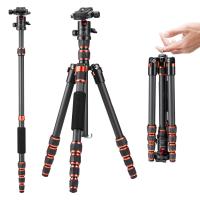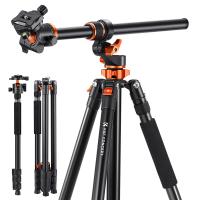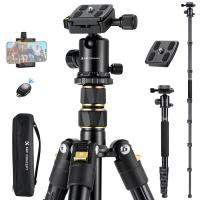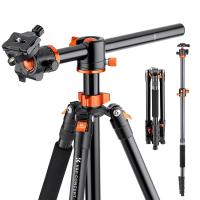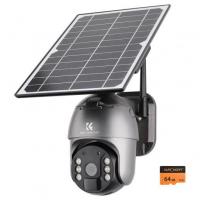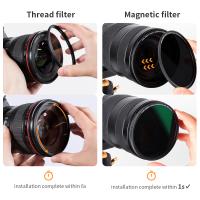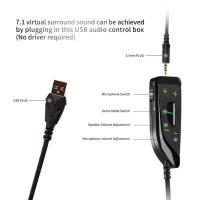How Speakers Work?
Understanding How Speakers Work: A Comprehensive Guide
Speakers are ubiquitous in our daily lives, from the tiny ones in our smartphones to the massive ones at concerts. Despite their prevalence, many people don't fully understand how these devices convert electrical signals into sound. This article aims to demystify the inner workings of speakers, providing a detailed yet accessible explanation of their components, functionality, and various types.
The Basics of Sound
Before diving into the mechanics of speakers, it's essential to understand the basics of sound. Sound is a type of energy that travels in waves through a medium, usually air. These waves are created by vibrations, which cause changes in air pressure. Our ears detect these pressure changes and interpret them as sound.
Components of a Speaker
A typical speaker consists of several key components, each playing a crucial role in sound production:
1. Diaphragm (Cone): The diaphragm is a thin, flexible membrane that moves back and forth to create sound waves. It is usually made of paper, plastic, or metal.
2. Voice Coil: Attached to the diaphragm, the voice coil is a coil of wire that moves within a magnetic field. When an electrical current passes through the coil, it creates a magnetic field that interacts with the permanent magnet, causing the coil and diaphragm to move.
3. Magnet: The permanent magnet provides a stable magnetic field in which the voice coil operates. This interaction between the voice coil and the magnet is what drives the diaphragm's movement.
4. Suspension System: This includes the spider and the surround, which keep the diaphragm centered and allow it to move freely. The spider is a flexible ring that holds the voice coil in place, while the surround is a ring of flexible material that connects the diaphragm to the speaker's frame.
5. Frame (Basket): The frame holds all the components together and provides structural integrity.
How Speakers Produce Sound
The process of sound production in a speaker can be broken down into several steps:
1. Electrical Signal: An audio source, such as a music player or a microphone, generates an electrical signal that represents sound waves.
2. Current Flow: This electrical signal is sent to the speaker, where it flows through the voice coil.
3. Magnetic Interaction: The current in the voice coil creates a magnetic field that interacts with the permanent magnet's field. This interaction causes the voice coil to move back and forth.
4. Diaphragm Movement: As the voice coil moves, it pushes and pulls the diaphragm. This movement creates pressure waves in the air, which we perceive as sound.
5. Sound Waves: The diaphragm's vibrations produce sound waves that travel through the air to our ears.
Types of Speakers
Speakers come in various shapes and sizes, each designed for specific applications. Here are some common types:
1. Dynamic Speakers: These are the most common type and use the components described above. They are versatile and can be found in everything from home audio systems to concert venues.
2. Electrostatic Speakers: These use a thin, electrically charged diaphragm placed between two conductive plates. When an audio signal is applied, the diaphragm moves, creating sound waves. Electrostatic speakers are known for their high fidelity but are typically more expensive and less durable.
3. Planar Magnetic Speakers: Similar to electrostatic speakers, these use a thin diaphragm with embedded conductors. The diaphragm is placed between two magnetic fields, and the audio signal causes it to move. Planar magnetic speakers offer excellent sound quality but are also more costly.
4. Horn Speakers: These use a horn to amplify the sound produced by the diaphragm. Horn speakers are highly efficient and are often used in public address systems and large venues.
5. Subwoofers and Tweeters: These are specialized speakers designed to handle specific frequency ranges. Subwoofers reproduce low-frequency sounds (bass), while tweeters handle high-frequency sounds (treble). They are often used in combination with other speakers to create a full-range audio system.
Factors Affecting Speaker Performance
Several factors can influence a speaker's performance, including:
1. Frequency Response: This refers to the range of frequencies a speaker can reproduce. A wider frequency response generally means better sound quality.
2. Sensitivity: Sensitivity measures how efficiently a speaker converts electrical power into sound. Higher sensitivity means the speaker can produce louder sound with less power.
3. Impedance: Impedance is the resistance a speaker offers to the electrical signal. Matching the speaker's impedance with the audio source is crucial for optimal performance.
4. Power Handling: This indicates the maximum power a speaker can handle without distortion or damage. It's essential to match the speaker's power handling with the amplifier's output.
5. Enclosure Design: The design of the speaker's enclosure can significantly impact sound quality. Enclosures can be sealed, ported, or use other designs to enhance performance.
Practical Applications and Considerations
Understanding how speakers work can help you make informed decisions when purchasing or setting up an audio system. Here are some practical considerations:
1. Room Acoustics: The acoustics of the room where the speakers will be used can affect sound quality. Consider factors like room size, shape, and furnishings when setting up your speakers.
2. Speaker Placement: Proper placement can enhance sound quality. For example, placing speakers at ear level and equidistant from the listening area can create a more immersive experience.
3. Matching Components: Ensure that your speakers, amplifier, and other audio components are compatible in terms of impedance, power handling, and other specifications.
4. Purpose and Use: Consider the primary use of the speakers. For example, a home theater system may require different speakers than a portable Bluetooth speaker.
Speakers are fascinating devices that play a crucial role in our audio experiences. By understanding their components, functionality, and various types, you can better appreciate the technology behind them and make more informed choices when it comes to audio equipment. Whether you're an audiophile, a casual listener, or someone interested in the science of sound, knowing how speakers work can enhance your appreciation of the art and technology of audio reproduction.












